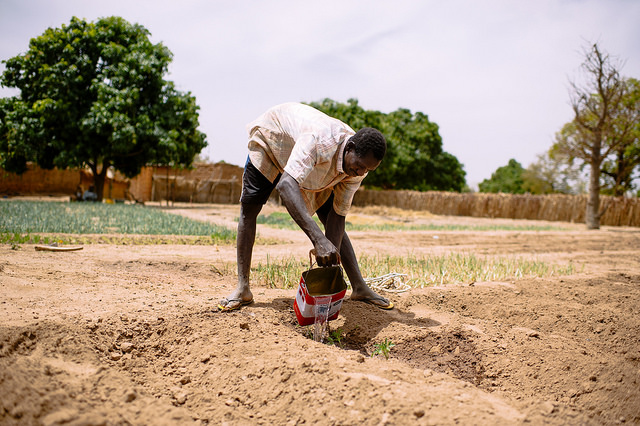Sustainable Agriculture in Burkina Faso Improves Steadily

Burkina Faso is a small, landlocked country located in the Sahel region of West Africa and is home to approximately 20.1 million people, 90 percent of whom rely on subsistence farming. Over the past several decades, rapid population growth has caused farmers to expand their cropland, contributing to the overfarming and overgrazing of much of Burkina Faso’s land. Ultimately, land overuse and unsustainable farming practices in conjunction with the effects of climate change has led to widespread land degradation.
Though much of the country’s land had been reduced to desert due to human action and ecological changes, the people have learned to turn conventionally unfruitful areas into arable land. Today, through soil and water conservation, crop diversification and community initiatives, sustainable agriculture in Burkina Faso is spurring economic development and food security for future generations.
Reversing the Ecological Damage
To reverse the “vicious agro-ecological cycle” that the population found themselves in, as the Overseas Development Institute (ODI) describes it, Burkinabe farmers began adopting three sustainable practices to conserve soil and water: zaï, contour stone bunds and demi-lunes.
Zaï is a technique that involves digging small pits to reverse desertification. The pits capture rainfall, manure and organic waste runoff, increasing soil fertility in the otherwise barren land. Contour stone bunds are stone barriers built around and throughout fields along natural contours trap rainfall and prevent soil erosion. Demi-lunes are semi-circle shaped ditches that are lined with cuttings to collect rainwater, nurturing crops planted nearby.
Through these practices and more, sustainable agriculture in Burkina Faso has made farmlands more resistant to drought and effects related to climate change. The restoration of degraded land has also contributed to increased agricultural productivity, according to the ODI.
Projects for Sustainable Agriculture in Burkina Faso
The Burkinabe economy is commodity-based, with cotton being the primary agricultural export. In order to help Burkina Faso diversify its crop exports and improve economic activity, organizations from the global community collaborated with the country on several initiatives. To promote sustainable agriculture in Burkina Faso, the Food and Agriculture Organization of the United Nations (FAO) worked with Burkinabe farmers in five villages between 2002 to 2007 to implement the Integrated Production Systems/Priority Areas for Interdisciplinary Action (PRODS/PAIA) project.
The FAO designed the PRODS/PAIA project to improve productivity and crop diversification by applying conservation agriculture techniques, which include minimal soil disturbance via a strict no-tilling policy, crop diversification, crop rotation and mulch building using residual plant materials and cover crops. The FAO shared these techniques through a social learning process called Farmer Field Schools. Farmers applied conservation agriculture practices, along with pest and production management techniques, at benchmark sites where they discovered improved yields upon experimentation.
Positive Results for a Positive Future
Between the conservation agriculture and Farmer Field Schools initiatives, the PRODS/PAIA project achieved beneficial outcomes in each participating village. Highlights included higher yields related to crop rotation, increased farm incomes and greater competitiveness in domestic markets.
Shortly thereafter, The World Bank embarked on the Agriculture Diversification and Market Development Project (PAFASP) between 2006 and 2017. By providing grants, supporting infrastructure and promoting sustainable agriculture in Burkina Faso, the PAFASP has resulted in the increased agricultural exports and rural incomes of the Burkinabe people.
In light of the progress sustainable agriculture had made in the country, Burkina Faso adopted a National Policy of Sustainable Development, which espouses a commitment to environmental preservation and sustainable practices as a vehicle to accelerated economic growth and improved standards of living. Though there is still work to be done, Burkina Faso is on its way to achieving sustainability, marked by a competitive agricultural market, the conservation of natural resources and lasting food security for its people.
– Chantel Baul
Photo: Flickr
